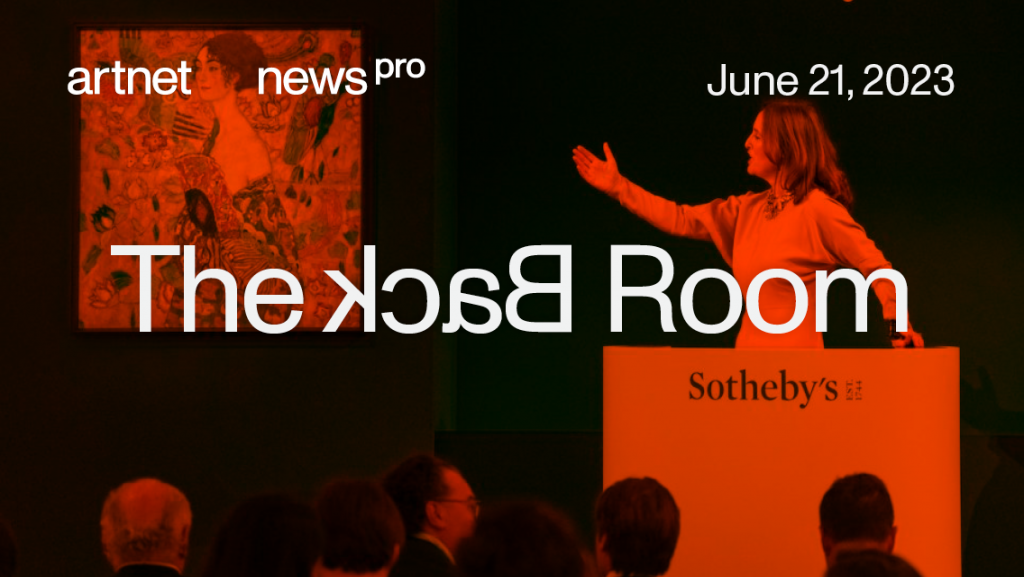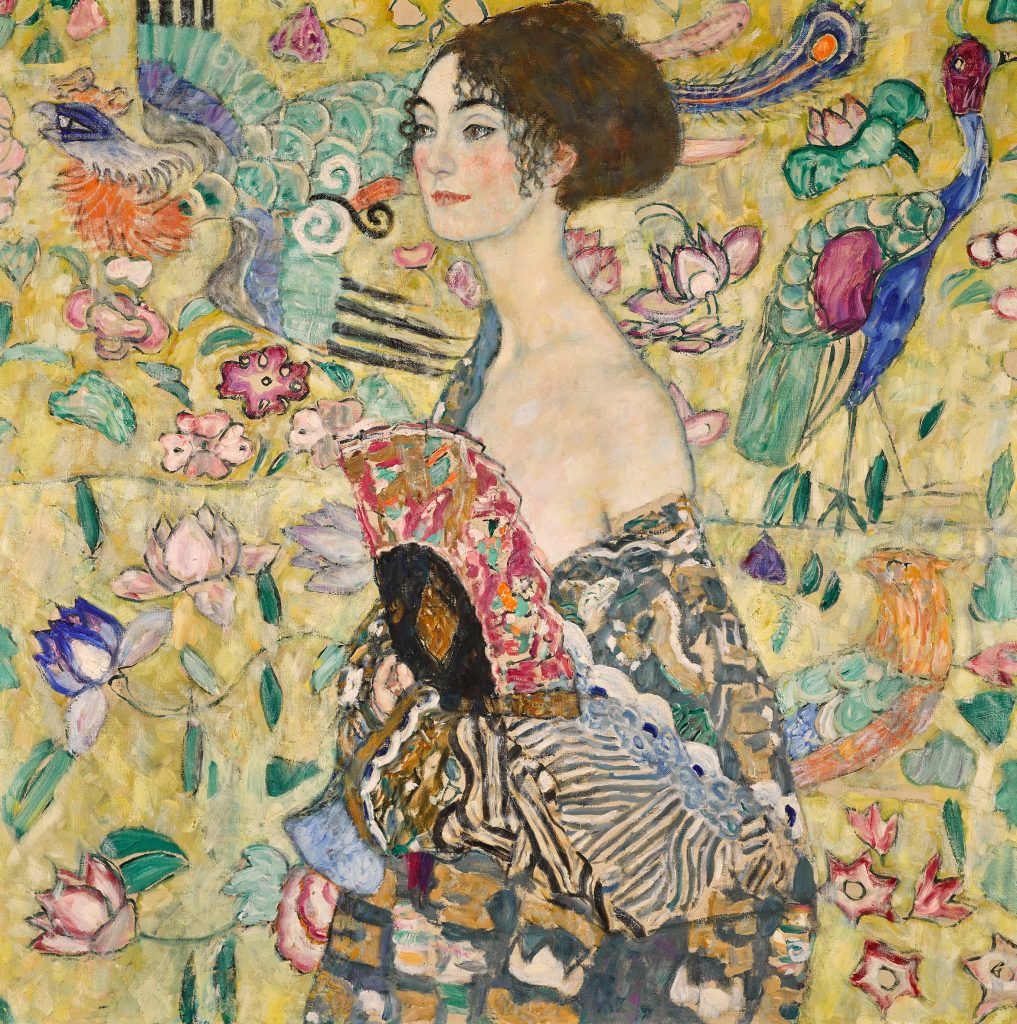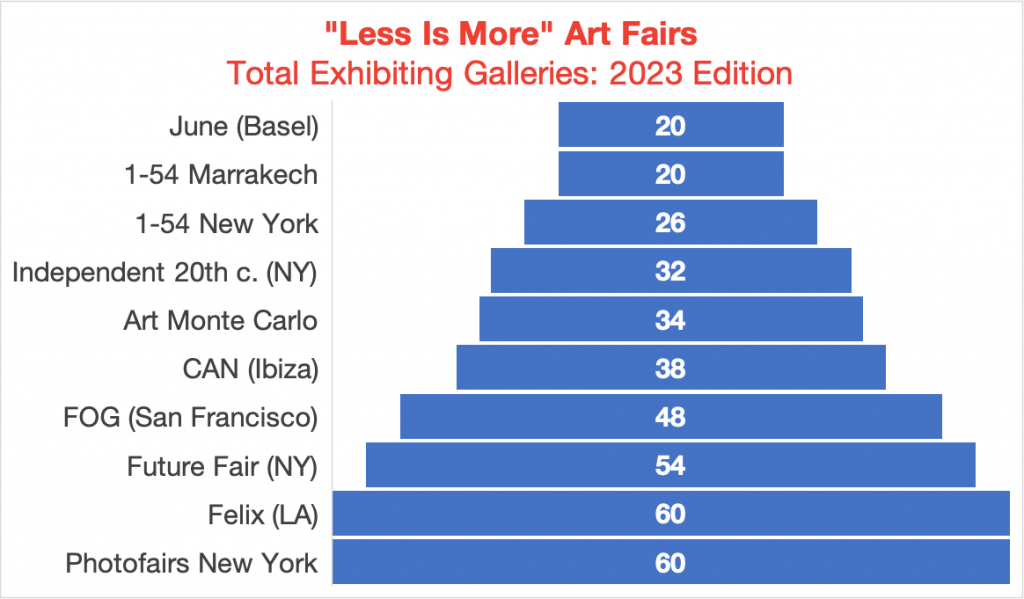The Back Room
The Back Room: The Klimt Connection
This week: the intrigue swirling around Dame mit Fächer, the flood-proof Hamptons art trade, the fairs getting small to get ahead, and much more.

This week: the intrigue swirling around Dame mit Fächer, the flood-proof Hamptons art trade, the fairs getting small to get ahead, and much more.

Artnet News

Every Friday, Artnet News Pro members get exclusive access to the Back Room, our lively recap funneling only the week’s must-know intel into a nimble read you’ll actually enjoy.
This week in the Back Room: the intrigue swirling around Dame mit Fächer, the flood-proof Hamptons art trade, the fairs getting small to get ahead, and much more—all in a 7-minute read (1,865 words).
_____________________________

Gustav Klimt, Dame mit Fächer (Lady with a Fan) (1917-18). Courtesy of Sotheby’s London.
Is Gustav Klimt the latest modernist to enter the echelon of Picassos, Monets, and other must-haves-at-any-price in the eyes of Asian’s ultra-wealthy? The evidence is mounting, and the implications for the market are substantial.
On June 27, Klimt’s Dame mit Fächer (Lady With a Fan) became the most expensive artwork ever to sell at auction in Europe—as well as the priciest Klimt—when it traded for a premium-inclusive £85.3 million ($108.4 million) in an evening sale at Sotheby’s London. That’s a nearly 10X increase since it last crossed the block to sell for $11.6 million in 1994.
But the work bears a closer look for two larger reasons: first, as our colleague Katya Kazakinawrote in last week’s Art Detective, “the Klimt is the brightest spot at a rather uncertain moment for the art market”; and second, because the mystery around the winning bidder(s), if not the consignor(s), seems to at least flow toward the Asia Pacific region.
Tale of Two Markets
Spending within most price tiers has undoubtedly cooled alongside sentiment, taking the overall market down a peg. For instance, Christie’s grudgingly acknowledged last week that its global sales, at $3.2 billion (£2.5 billion), were down 23 percent from the comparable period in 2022.
And yet, in Katya’s words, “There remains a bracing desire at the top of the market to compete for rare and exquisite artworks.” The boisterous bidding for Dame mit Fächer reinforces the emergence of a bifurcated trade familiar to financial types.
The links between the painting and the Asia Pacific region go much further than its perceived use of an East Asian motif. Recently, enthusiasm for Klimt seems particularly acute among Asian collectors. Worth noting…
The region’s willingness to pay dearly (at least when compared to U.S.- and Europe-based buyers) may relate to the giddiness still felt from this year’s long-awaited lifting of Covid-related restrictions on international travel and massive gatherings such as art fairs. But an even more compelling question about the Klimt is who, exactly, bought it—and why.
Process of Elimination
Wong, now helming her own eponymous art advisory, is known to have at least three clients who might have been able to buy Dame mit Fächer. But one option stands out based on facts on the ground (assuming we take Wong at her word).
Client #1 (Least Likely): Hong Kong-based collector Joseph Lau. Although he too has paid tens of millions of dollars for modernist masterpieces, none is known to have topped the $67.4 millionprice of Picasso’s Buste de femme in 2015. More importantly, Lau is now a fugitive in Hong Kong, and he has recently sold off some of his holdings in wine, Chinese works of art, and Hermès bags due to an apparent personal liquidity crisis.
Client #2 (More Likely): Financier Pierre Chen. He has spent huge sums for modern and contemporary artworks. Now on display in a Tate Modern show of his foundation’s holdings is David Hockney’s Portrait of an Artist (Pool with Two Figures), which sold for $90.3 million at Christie’s in 2018. However, Chen is based in Taiwan, not Hong Kong.
Client #3 (Most Likely): Collector and entrepreneur Rosaline Wong. Described as an “aggressive” buyer who won’t flinch at spending nine figures for an artwork, Wong may or may not be the end client in several major transactions she’s paid for. But the most intriguing links between her and Dame mit Fächer include that…
Rosaline Wong declined to comment to Artnet News. But regardless of her possible involvement in the latest Klimt mega-sale, the deal highlights a broader trend in art buying.
___________________________________________________________
In financial terms, a so-called flight to quality is already in motion. At the high end of the market are bidders like the Klimt buyer who are…
At the other end of the market there are fair-weather flippers, speculators who rely on financing (possibly even on financing from the houses themselves), and the smart but careful buyers—investors whose coffers were overflowing when interest rates were at historic lows and opted to diversify into art but may now be buying bonds.
If the market stays rocky, the division between the two extremes is likely to grow from a gulf into a chasm. But if so, expect to find some whales from the Asia Pacific region swimming confidently on the high side.
_________________________________________________________
This week’s Wet Paint was still being mixed at newsletter time, so here’s what else made a mark around the industry since last Friday morning…
Art Fairs
Auction Houses
Galleries
Institutions
Tech and Legal News
_________________________________________________________
“After we had to turn off the lights, there were actually galleries selling paintings in the dark. I couldn’t believe it. People were buying the works and walking out with them.”
—Rick Friedman, executive director of last weekend’s Hamptons Fine Art Fair, contending that business kept chugging along even as torrential rains forced the tented expo to close early for safety reasons. (Artnet News)
____________________________________________________________

© 2023 Artnet Worldwide Corporation.
Last week saw 38 exhibitors converge on the island of Ibiza for the second iteration of Contemporary Art Now (CAN), one of the latest entries in a growing group of boutique art fairs counterweighting the global giants.
While the works on offer at CAN “were mostly eye-catching, figurative paintings priced around the €10,000 level,” per the intrepid Melanie Gerlis of the Financial Times, the fair nevertheless attracted some internationally known dealers more often seen at larger expos, including the Hole, Carl Kostyál, and Over the Influence.
A grand total of 38 galleries sounds microscopic out of context. But a quick accounting of fairs following the “less is more” model reveals that CAN isn’t even among the six smallest to welcome an esteemed exhibitor or two.
Among those that have either completed their 2023 edition or confirmed their exhibitor lists for later this year…
Even though the roundup above is not comprehensive, it’s still evidence that an audience on both the buy and sell sides of the trade believes that, when it comes to art fairs, bigger isn’t always better.
—Tim Schneider
________________________________________________________